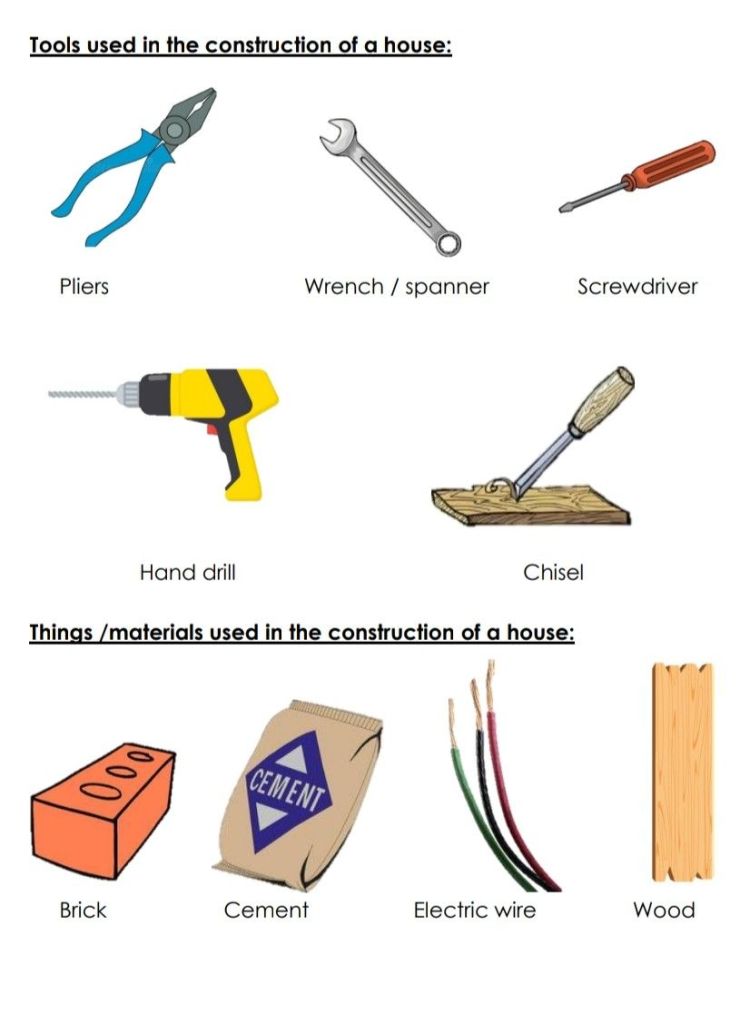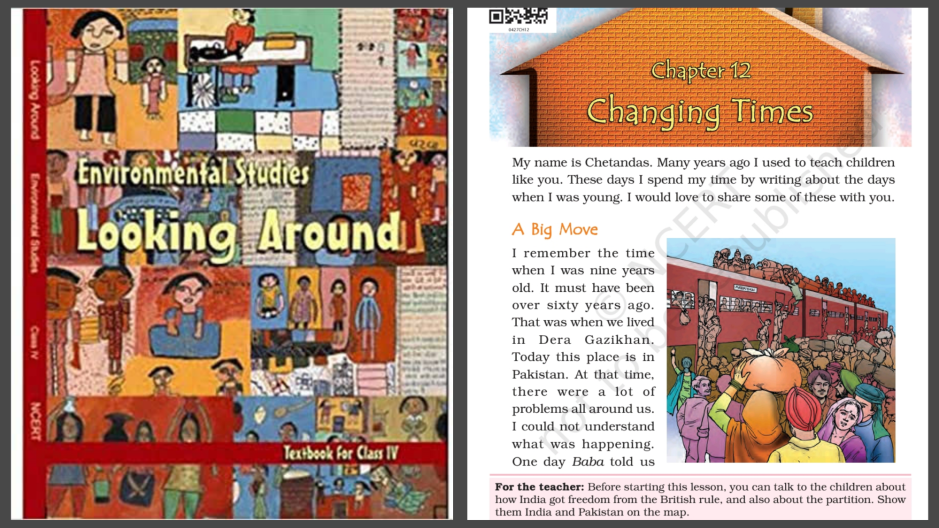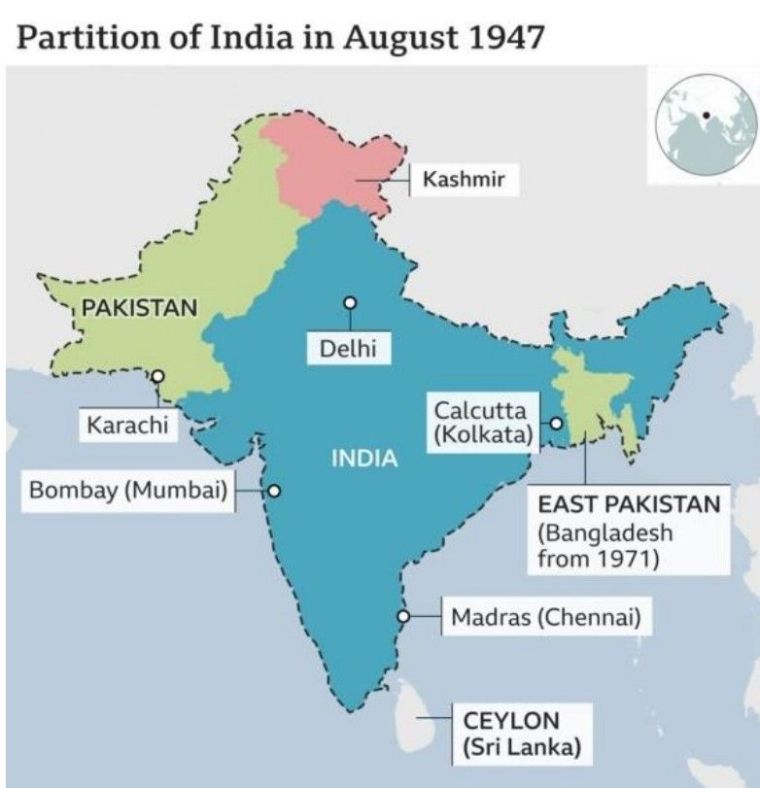CBSE Class 4 EVS – Looking around – Takshila-DPS Pune- Patna-Coimbatore
Read more: CHAPTER 12: Changing TimesThe following notes are from the academic year 2022-23 of DPS Pune- Patna-Coimbatore, compiled by my twin daughters. These notes include all the important material of the chapter which can be asked in the exam, compiled from the EVS textbook, study course material books and the notes from class.
Readers, if you find these notes helpful please do write your views in the ‘comment section’ of this article and if you like me to upload any notes on any topic taught in class 4, please be free to post your replies. Subscribe to my blog for new updates, notes and posts. Have a great year and all the best.
Chapter 12: Changing times
Important points:
- A tool used by a mason. chisel
- A tool used by a carpenter. Screwdriver, hand drill
- A place in Pakistan where Chetandas lived. Dera Gazi Khan.
- A person who makes furniture and other objects with wood. Carpenter.
- A person who works to repair the taps and pipes. Plumber
- Wire netting on the windows keeps flies and mosquitoes out.
- Entry of sunlight is essential in our houses to kill germs and remove dampness.
- The garbage should be disposed off on a daily basis to prevent bad smell and germs.
- Paint prevents rusting of iron.
- Cement and concrete floors should be washed regularly.
- A worker who builds houses, shops etc. with concrete, bricks or stones. Mason
- Windows should have wire or plastic screens to keep out flies and mosquitoes.
- Chetandas had to shift to India due to Partition
- In cold places roofs are lower.
- Drains should be covered to keep away flies and mosquitoes.
- Materials used to build kutcha houseà cowdung, husk, mud.
- Materials used to build pucca houseà iron, cement and baked bricks.
- A building material made from a mixture of broken stone or gravel, sand, cement, and water. Concrete
- It is the process of improving a broken, damaged, or outdated structure. Renovation / Remodelling
- Insects will not breed on damp-proof and well – plastered walls.
- Place and climate determine the type of house we should build (construct).
- A person who plans, designs, and reviews the construction of buildings. Architect
- The entry of sunlight is essential to kill germs and remove dampness.
- Chetandas had to shift to Delhi (India) due to partition of India and Pakistan.
- Chetandas got a piece of land in Sohna village, Haryana, where they made their house with mud.
- The roof was made of frame made by joining strips of wood on which branches of neem and keekar were laid.
- The floor was coated by cowdung mixed with mud.
- Wood is a good insulator and helps to keep the house cool in the summer and warm in the winter.
- Wood helps to keep the house cool in the summer and warm in the winter.
- The slopping roof does not allow rainwater or snow to collect on the roof.
- A house can be made safe by fitting the windows with grills that are painted to avoid rusting.
Question and answers:
Q.1) Why do we need houses?
Ans) We need houses to:
- Live in.
- Protect us from wild animals, thieves and provide a secure environment
- Protect us from harsh weather such as rain, heat, cold, floods and storms etc.
Q.2) What factors determine the type of house to be built or construct?
Ans) Three main factors determine the type of house we should build are:
- Place and climate: The design of a house depends on the climate and place where the house is built. For example house with slopping roof in rainy climate and flat roof in dry climate.
- Materials available: Bricks, bamboo, mud, concrete, glass, iron, thatch are the commonly used building materials. It also depends on the locally available materials.
- Budget: Money available is the third factor that determines the size and design of the house.
Q.3) Concept based question:
Aarti lives with her family in Shimla, Himachal Pradesh. Although this city remains cold throughout the year, rain and snowfall in winters make it cold during this time. Can you tell what type of house Aarti must be living in?
Ans) In cold hilly regions, people build wooden houses or log cabins with sloping roofs, since:
- Wood is a good insulator and helps to keep the house cool in the summer and warm in the winter.
- The sloping roof does not allow rainwater or snow to collect on the roof.
Q.4) Planning and maintenance of a modern house:
- The walls of the house should be strong. Insects will not breed on damp-proof and well-plastered walls.
- There should be wire nettings on windows that prevent flies and mosquitoes from entering the house.
- A house can be made safe from accidents and thefts by fitting the windows with grills that are painted to avoid rusting
- Doors and windows should be placed in such a way that fresh air and sunlight enter every room.
- The entry of sunlight is essential to kill germs and remove dampness.
- The floor of the house should be levelled and smooth to avoid accidents.
- Cement and concrete floors should be washed regularly.
- The garbage should be disposed off on a daily basis to prevent bad smell and germs.
- It should have good drainage and the drains should be covered to keep away flies and mosquitoes.
- These drains should also be cleaned regularly with disinfectants to prevent odour.
Q.5) How is the foundation of a house laid?
Ans) The foundation of a house is laid first by digging a hole in the ground. Bricks or big slabs of concrete are placed in the hole.
Q.6) Write two things about planning and maintence of a good house that should be kept in mind while constructing a modern house.
Ans) Two things to be kept in mindwhile planning a good house are:
- Doors and windows should be placed in such a way that fresh air and sunlight enter every room.
- Facility of water supply should be there in the kitchen bathroom and toilets.
Q.7) What is the work of a plumber? Mention three tools used by him.
Ans) A plumber specializes in installing and maintaining systems used for drinking water, sewage and drainage. Plumber uses wrench, pliers, pipe cutter.
Q.8) Why do we put a net across the windows of the house?
Ans) Wire netting on the windows keeps flies and mosquitoes out; hence a net is put across the windows of the house.
Q.9) Why do we have grills on the window?
Ans) A house can be made safe from accidents and thefts by fitting the windows with grills that are painted to avoid rusting.
Q.10) Why do some houses have flat roof and some have slanting roofs?
Ans) A sloping roof does not allow rainwater or snow to collect on the roof, hence they are common in rainy and cold climate. A flat roof is cheaper and easy to build; hence it is preferred when the climate is not rainy or cold.
Q.11) Why is the entry of sunlight essential for a house?
Ans) Doors and windows should be placed in such a way that fresh air and sunlight enter every room. The entry of sunlight is essential to kill germs and remove dampness.
Q.12) Differentiate between:
The houses made earlier (Kutcha house) and the houses made today (Pucca house)
| Kutcha House | Pucca House | ||
| 1 | Walls are made of mud | 1 | Walls are made of cement and bricks |
| 2 | Roof is made of branches of trees, hay, bamboo etc. | 2 | Roof is made of stones, iron, cement and sand. |
| 3 | The floor is made of mud coated by cow dung and mud paste. | 3 | Floor is made of tiles or marble. |
| 4 | Kitchen is small and cooking is done on the floor. | 4 | Kitchen is big and has raised platform. |
| 5 | The houses are not very strong. | 5 | The houses are strong. |
Q.13) The houses in plains and houses in hilly areas
| Houses in plains | Houses in hilly areas | ||
| 1 | Flat roofs or terraced roof are common in houses in plains where there is mild or no rainfall. | 1 | A sloping roof does not allow rainwater or snow to collect on the roof, hence they are common in hilly areas |
| 2 | It is cheaper to build | 2 | It is expensive |
Q.14) Give reasons:
A) All iron bars, girders and railings should be painted. Why? (Girders- support beam).
Ans) Iron objects when they come in contact with air and moisture they rust. Thus, to prevent the rusting of iron, all iron bars, girders and railings should be painted.
B) Floor should be strong and not have any holes or gaps. Why?
Ans) The floor should be strong and not have any holes or gaps because rats, cockroaches and other insects will get into them and cause a lot of damage.
C) Cow dung is mixed with mud and is used to coat the floor in a kutcha house. Why?
Ans) Cow dung is mixed with mud and is used to coat the floor in a kutcha house because this keeps the insects away.
D) Baba put branches of neem and keekar tree on the frame to make the roof. Why?
Ans) Baba put branches of neem and keekar tree on the frame to make the roof so that Termites would not harm the wood.
E) Drains need to be covered. Why?
Ans) Drains need to be covered because –
- Closed drainage systems prevent direct exposure of harmful waste to humans.
- Closed drainage systems prevent the accumulation of stagnant water, thus avoiding mosquitoes breeding.
DEFINE:
- Concrete: Concrete is defined as a building material made from a mixture of broken stone or gravel, sand, cement, and water, which can be spread or poured into moulds and forms a hard mass resembling stone.
- Renovation / Remodelling: It is a process of improving broken, damaged old buildings or houses.
People who help in building houses: Electrician, plumber, mason carpenter and architect. They use specific tools that help in building
| Work | Tool | |
| Electrician | A person who does electric wiring in buildings. | Pliers, screwdriver, tester |
| Plumber | A person who specializes in installing and maintaining systems used for drinking water, sewage and drainage. | Wrench, pliers, pipe cutter |
| Mason | A worker who builds houses, shops etc. with concrete, bricks or stones. | Chisel, level tube, measuring tape. |
| Architect | A person who plans, designs, and reviews the construction of buildings. | Drawing-board, blueprint, compasses, dividers. |
| Carpenter | A person who makes furniture and other objects with wood. | Screwdriver, hand drill |
Tools used in the construction of a house:

Things /materials used in the construction of a house:
TEXTBOOK NOTES
Characters:
- Amma and Baba
- Chetandas and Suman
- Raju, Simi and Montu
A BIG MOVE
- Years ago, Chetandas used to teach children (teacher), now he spends his time by writing about the days when he was young.
- When Chetandas was 9 years old, he lived in Dera Gazikhan in Pakistan.
- Chetandas was sad because he had to leave his house, village and friends due to partition.
- Chetandas, Baba, Amma, younger brothers and sisters took a train to Delhi.
- For some time they all stayed in a camp. They lived in big tents that were put up in a huge ground.
- Chetandas’ family had been given some land in Sohna village, Haryana.
- Chetandas’ parents built their house, using materials which were locally available.
- Wallà Baba dug the soil, and we quickly filled the pans and passed them on to Amma. Gudiya and Amma mixed husk in it. Baba put up the walls.
- FlooràWe brought cow dung from nearby houses. Amma mixed it with the mud. She coated the floor with this mixture so that this would keep the insects away.
- Roofà Baba made a frame by joining strips of wood and fixed it on the four walls. We put branches of neem and keekar trees on the frame, so that termites would not harm the wood. Amma put old gunny bags on this and covered them with mud.
- Even though most of the houses were made Chetandas’ house, he liked his house the best as it was just like his old house.
A CHANGING HOUSE
- Before getting married, Chetandas decided to repair the house and build one more room.
- Roof à We used iron and cement for making the roof of the new room.
- Wallà The walls were made of unbaked bricks. The advantage of using bricks was that they did not need to coat the wall every week. Once a year they would whitewash the walls.
- Kitchenà They also built a small kitchen in the courtyard. The kitchen had a mud chulha and place to keep the vessels. Chetandas’ wife Suman used to sit on the floor in the kitchen and cook. They all used to sit on mats in the kitchen and eat together.
- Toiletà Previously people used to go out in the fields for their toilet. Chetandas built small toilet with unbaked bricks behind the house. People from the basti used to come to clean the toilets and take away the waste.
MORE CHANGES
- Chetandas’ two sons and a daughter were born in that house.
- Fifteen years ago, his daughter Simi got married and moved to Palwal.
- When Raju was to get married, they felt that they should get the house ready for the new bride.
- Wallà Baked bricks
- Roofà put a lintel for the roof.
- Floorà They used marble chips and cement for a strong and fancy floor.
- Toiletà In the toilet pipes were to take away the waste.
- KitchenàThe kitchen was made bigger. Now, Raju’s wife does not use the clay chulha. She stands while cooking on the gas stove.
SEEING NEW THINGS
- Chetandas’ younger son Montu moved to Delhi when he got a job there. Now he stays there with his family.
- Suman and Chetandas stay with Montu for some months in a year, and with Raju in Sohna for the rest of the time.
- On the way to Delhi from Sohna, they go through Gurugram. So many big high-rise buildings have come up there!
- A few years ago Raju renovated the toilet and the bathroom. He used coloured tiles in his bathroom.
Over the sixty years, different materials were used at different times in Chetandas’ house. List these in the correct order:
| Soil Husk Cow dung Mud Gunny bag Wood | Iron Cement Unbaked bricks | Cement Baked bricks Lintel Marble chips Pipes | Coloured tiles in bathroom |
Map Work:
Mark the following states in the political map of India:
a. Locate five neighbouring countries of India and the states
b. Haryana
c. New Delhi
Thanks a lot for visiting my blog. Please do ‘★ LIKE’ the post if you found it to be useful. Your comments, suggestions, criticism and all opinions are very much appreciated. Please do write your queries in the Reply/comments section and I will try to get back to you asap.

All the content on this blog is copyrighted. It takes immense research, hard work, patience and time to come up with a comprehensive article/post. If you like and need to use any of my article(s) or any part of it, please do give the requisite reference, link or credit to my website/blog . DO NOT COPY WITHOUT PERMISSION.




